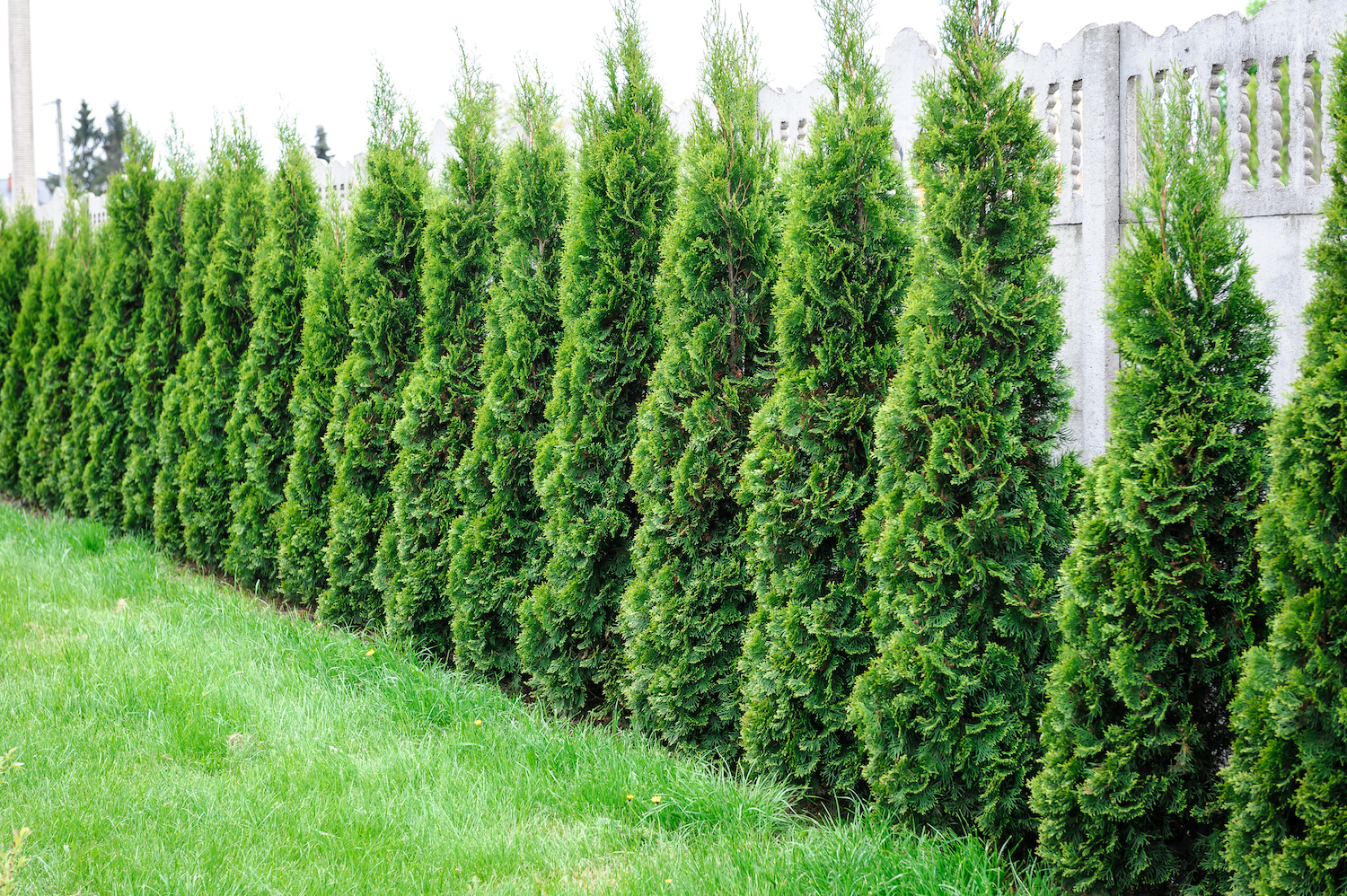
Instead of a solid fence or wall around a property perimeter, a preferred option for many is a row of evergreen trees. This natural 'green screen' is an attractive choice with numerous advantages. However, the best trees for a fence line can vary according to your situation and location.
'Trees provide a natural, living boundary that offers privacy and aesthetics,' says Maureen Wright, horticultural expert from Fast Growing Trees. 'Trees also offer shade, release oxygen, absorb carbon dioxide and provide habitats for birds and beneficial bugs - unlike artificial fences'.
As well as being great trees for privacy, these evergreens (and some deciduous trees) can also create a buffer against inclement weather, as well as complement a fixed boundary wall or a fence. So discover which are the best trees for a fence line, according to experts.
1. Leyland Cypress (Cuprocyparis leylandii)
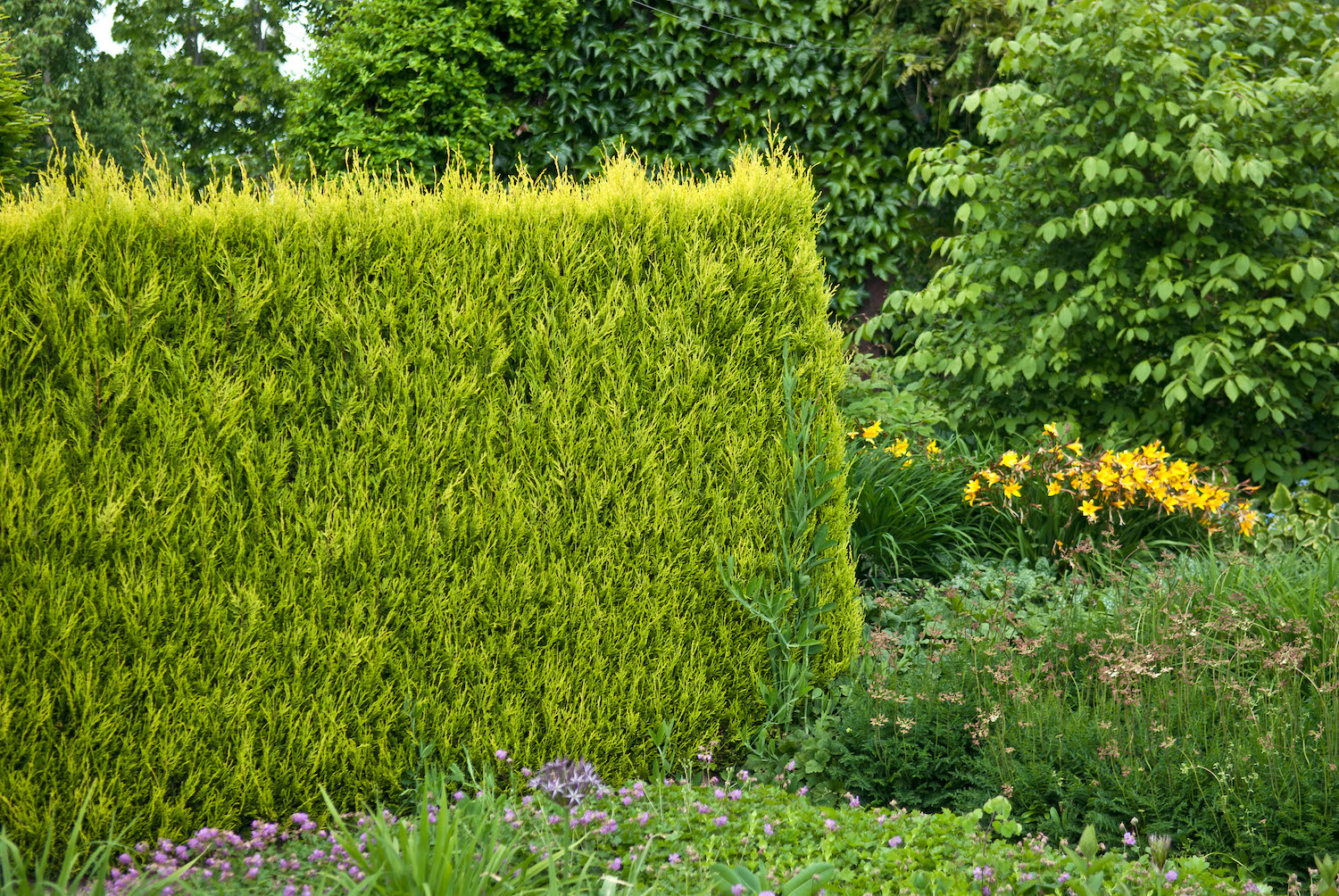
Leylandii are popular evergreen trees for a fence line, as they are fast-growers. They can be planted in front of a timber or chain-link fence if you prefer a more natural look, and want to keep pets in and other animals out. They can also be planted in a row on their own to create privacy.
'Leyland Cypress is known for its fast growth rate, dense foliage, and tall, columnar shape, making it an excellent choice for privacy screening,' says Maureen Wright, horticultural expert from Fast-Growing Trees. 'Because Leyland Cypress grows quickly, it provides relatively fast privacy. It's also pretty low maintenance once established. These trees prefer well-drained soil and full sun. Water them regularly, especially during the establishment phase and prune as needed to maintain desired height and shape'. Maureen says this tree best suit low maintenance gardens in USDA Hardiness Zones 6-10.
'Leylandii don't do too well in super hot and super dry weather like central valley California,' says landscaper, Matt, founder youryardcoach, @yardcoach. 'But down south, up north and back east they do well. They reach maturity in about ten years and will go on for around three decades.'
2. Eastern Red Cedar (Juniperus virginiana)

This native, aromatic evergreen grows in a variety of soils, and does well in most USDA Hardiness zones, from 2-9. The Eastern Red Cedar is hardy and drought-resistant, making it a good choice for a fence line.
As well as offering privacy and style once grown, its bushy foliage make it a favored nesting site for many birds including waxwings. The Eastern Red Cedar fruits are also eaten by birds and other wildlife gardening favorites, so this is a great option for nature-lovers, who also want a beautiful boundary. 'With its dense foliage and conical shape, Eastern Red Cedar is ideal for privacy,' says Maureen.
She adds: 'It's drought-tolerant, adaptable to various soil types, and relatively low maintenance too. Plant Eastern Red Cedar in well-drained soil and full sun. These trees also need to be watered regularly during the establishment phase. Prune as needed to maintain shape and remove dead or diseased branches.'
3. American Arborvitae (Thuja occidentalis)
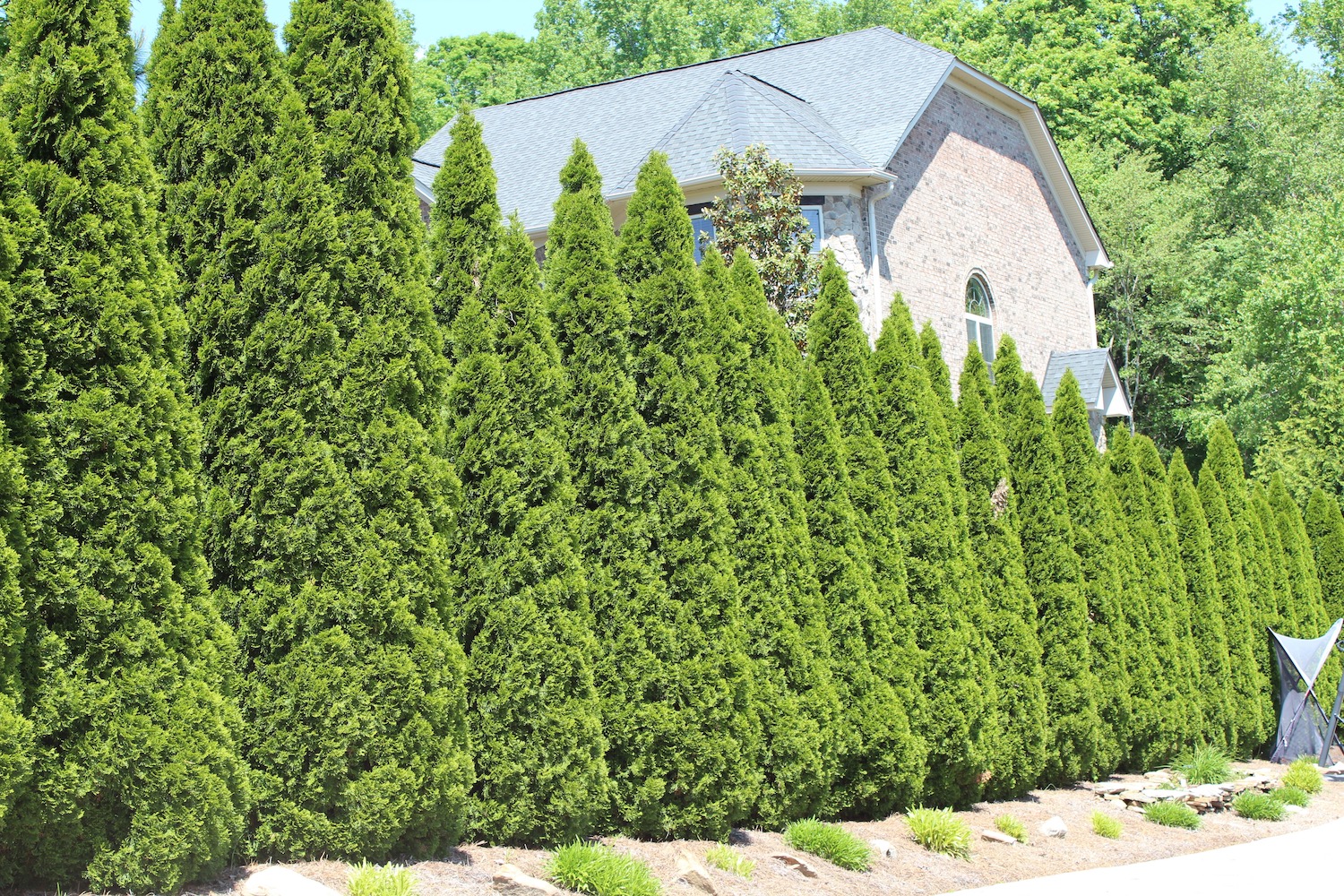
Another great evergreen for a living privacy fence is American Arborvitae, much loved for its bushy foliage and conical to pyramidal shape. It can grow up to 10 ft wide and 40 ft tall, if given the space, so will need to be pruned regularly to keep the size you want.
'American Arborvitae is another fast-growing evergreen that's adaptable to different soil types and growing conditions,' says Maureen. 'It's also relatively low maintenance. It likes well-drained soil and full sun to part shade. It also needs to be watered regularly, especially during dry periods. The American Arborvitae is suited to USDA Zones 3-7 and will need to be pruned to maintain its shape and remove dead or overcrowded branches'.
4. Green Giant Arborvitae (Thuja standishii × plicata 'Green Giant')
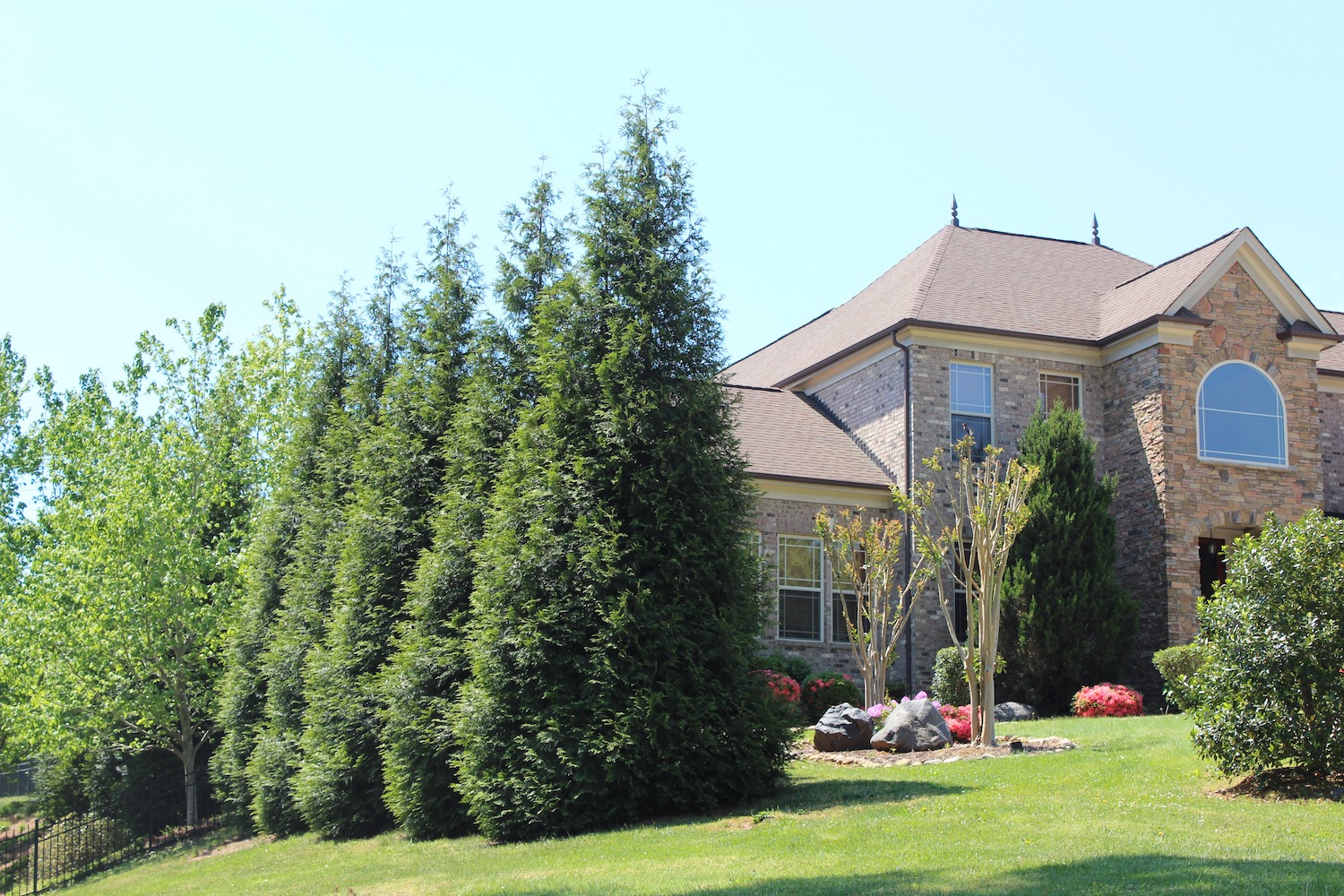
Green Giant Arborvitae is an evergreen conifer that's native to southern Japan. It's another species that grows fast, so won't take long to create a fence line, particularly in zones 5-7. This is the tree for you if you don't want to be overlooked by your neighbours or passers by.
'Thuja Green Giant is a good wind break or privacy screen if you have the space,' says landscaper, Matt, @yardcoach. 'At the base you can find them 16 ft wide and up to 50 ft tall. It's pretty disease-resistant, hardy, cold tolerant and fast-growing. These trees have a nice pyramidal shape to them and a uniform texture, and will tolerate clay, sandy loams and even rocky soils, just make sure your tree has a good planting hole for a good start'.
5. Autumn Blaze Red Maple (Acer × freemanii 'Autumn Blaze')

Fence line trees don't have to be evergreen. If you'd like to provide a perimeter tree that changes colors with the season for most of the year and are not too fussed about privacy 365 days, consider an Autumn Blaze Red Maple.
The Autumn Blaze Red Maple is a beautiful deciduous hybrid that will reward you with a spectacular show each fall. A cross between the silver maple and red maple, it will lose its leaves in winter but they will return in gorgeous green come spring. It grows up to three ft per year and can reach 40-50 ft tall and 30-40ft wide, providing screening and shade. 'The Autumn Blaze Red Maple has brilliant orange-red fall foliage, adding visual interest to the landscape,' says Maureen. 'It's relatively low maintenance and suits USDA zones 3-8. Plant it in well-drained soil and full sun. It will need watering regularly, especially during the establishment phase'.
'Plant Autumn Blaze at least 20-30 ft away from structures or power lines to accommodate its mature size,' says Arbor Valley Nursery's horticultural expert. 'Dig a hole twice as deep and wide as the root ball of the tree. If you have heavy clay or sandy soil, it can be amended with compost to improve drainage and fertility'.
6. Hornbeam (Carpinus betulus)
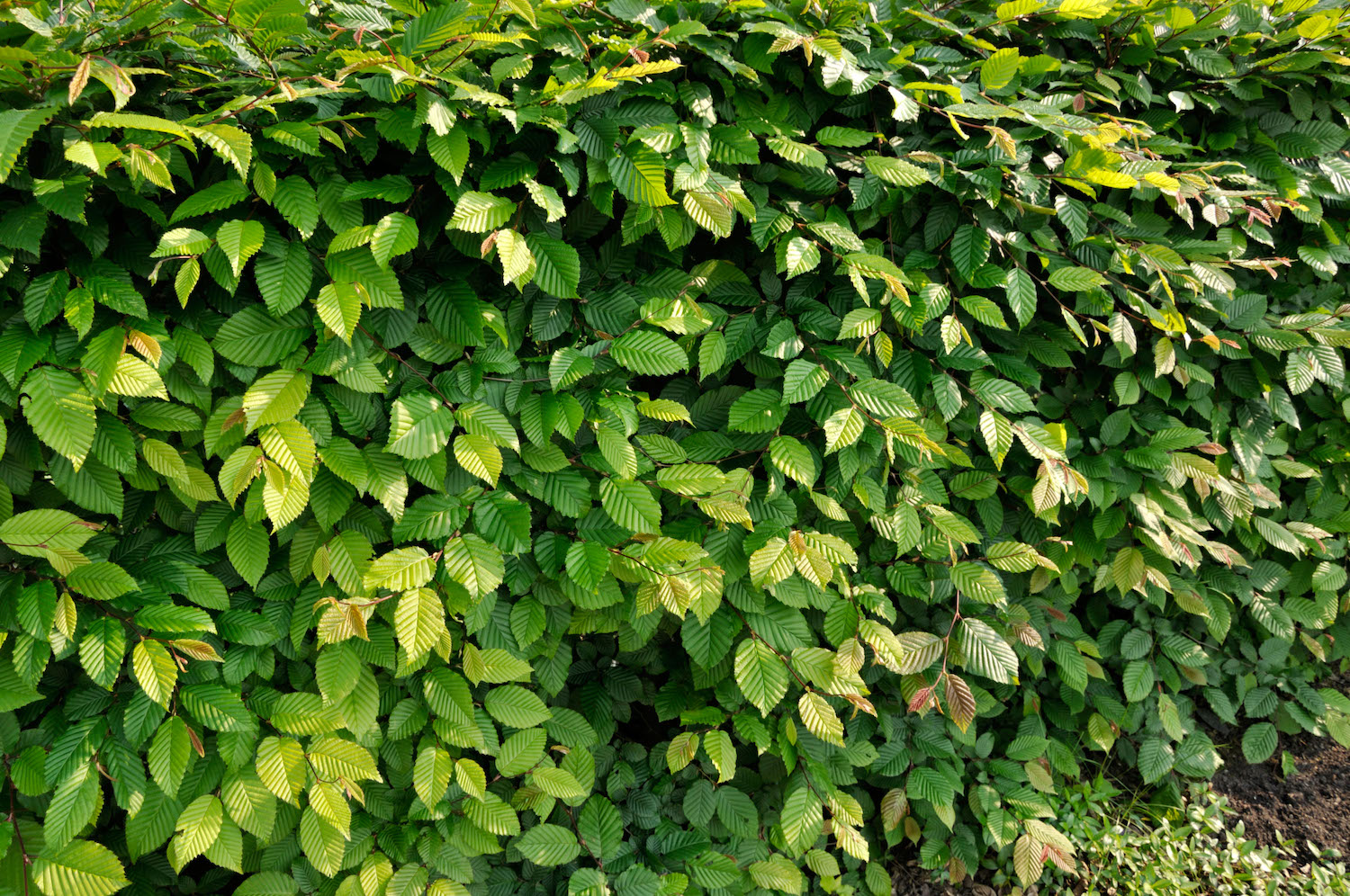
Gardening expert, Tony O'Neill, and founder of Simplify Gardening recommends Hornbeam for a fence line, due to its dense foliage and ability to withstand heavy pruning. It's a fast growing hedge for privacy, too.
'Hornbeam is an excellent choice for creating a privacy screen or hedge,' says Tony. 'Its leaves turn a beautiful golden color in the fall, adding seasonal interest. Choose a location with well-draining soil and full sun to partial shade. Hornbeams can adapt to a range of soil types but prefer slightly acidic to neutral pH'.
He adds: 'Water regularly to establish its roots, especially in the first few years. Once established, Hornbeam is quite drought tolerant. Prune in late winter or early spring to shape the hedge and encourage dense growth'.
7. Italian Cypress (Cupressus sempervirens)
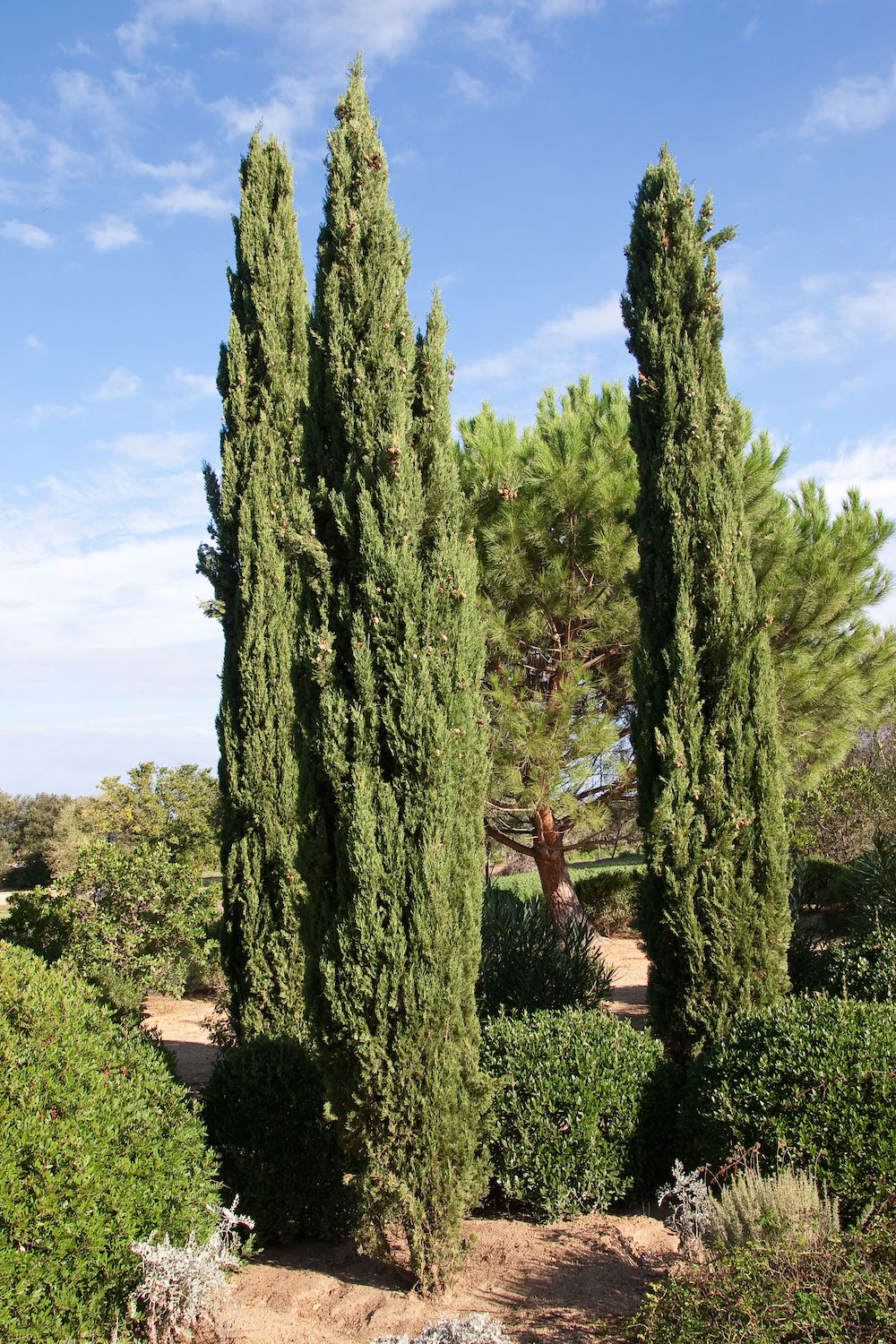
Another of Tony's favorite trees for a fence line is Italian Cypress for its natural elegant style that works well for Mediterranean gardens. 'It's particularly suitable for properties that benefit from a Mediterranean or classical architectural style. 'Its tall, narrow growth habit makes it ideal for tight spaces. This tree thrives in full sun and well-draining soil. It’s perfect for long, narrow strips along a property boundary where other trees might be too broad,' Tony says.
He continues: 'Once established, Italian Cypress requires minimal maintenance. It’s drought-tolerant, although occasional deep watering during dry spells promotes healthier growth. Pruning is rarely necessary unless shaping is required for aesthetic purposes or to remove damaged branches. Both Hornbeam and Italian Cypress offer distinct aesthetic appeals and functional benefits for fencing. Hornbeam provides a more traditional hedged look, while Italian Cypress offers a striking vertical element to landscapes'.







